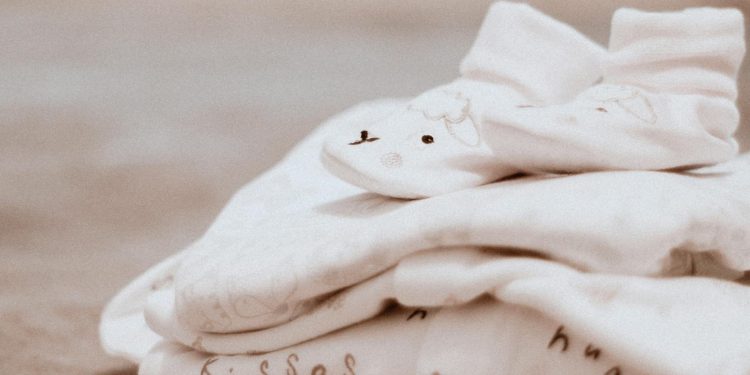Having a baby is one of life’s most beautiful experiences, but it can also be quite costly. Between diapers, baby gear, and medical expenses, the costs add up quickly. One area where new parents can save significantly is in baby clothing. Babies grow fast, which means they outgrow clothes almost as quickly as you buy them. With some strategic planning, it’s possible to build a functional, stylish wardrobe for your baby without breaking the bank. In this guide, we’ll explore how to shop for baby clothes on a budget while still ensuring your little one is comfortable and well-dressed.
1. Focus on Essentials First
When shopping for baby clothes, it’s easy to get carried away by the adorable outfits available. However, when working with a budget, it’s important to focus on essentials first. Newborns spend most of their time sleeping, feeding, and playing, so comfort is key. Stick to the basics, such as:
- Onesies: Onesies are a versatile wardrobe staple that can be worn alone or layered. Look for multipacks, as they often provide better value.
- Sleepers: Soft, footed sleepers are perfect for bedtime and keep your baby warm and cozy without the need for extra blankets.
- Leggings and Pants: Simple, stretchy pants are easy to put on and take off and are comfortable for babies to wear during the day.
- Hats and Socks: Babies lose a lot of heat through their heads and feet, so hats and socks are essential for keeping them warm.
Start with a few essential pieces in each category, and avoid buying too many items in newborn sizes, as babies grow out of them very quickly.
2. Buy Secondhand
Secondhand shopping is one of the best ways to save money on baby clothes. Babies grow so quickly that many items are often barely worn before they no longer fit. Thrift stores, consignment shops, and online marketplaces like Facebook Marketplace, Poshmark, and ThredUp are great places to find gently used baby clothing at a fraction of the cost of new items.
Look for secondhand clothing in good condition, free from stains or tears, and make sure to wash everything before dressing your baby in it. Secondhand shopping not only saves you money but is also a more sustainable option, reducing waste and giving clothes a second life.
3. Take Advantage of Sales and Discounts
Sales and discounts are your best friend when shopping for baby clothes on a budget. Sign up for email newsletters from baby clothing brands and stores to be notified of upcoming sales, discount codes, and special offers. Many stores have end-of-season sales where you can find items at significant discounts, allowing you to stock up for the next season.
Consider shopping during holiday sales, such as Black Friday or back-to-school events, when many stores offer deep discounts on clothing. Additionally, look for clearance sections both online and in-store, as you can often find high-quality items at reduced prices.
4. Buy Gender-Neutral Clothing
When building a baby wardrobe on a budget, buying gender-neutral clothing is a smart choice, especially if you plan on having more children. Neutral colors like white, gray, yellow, and green can be easily used for future siblings, regardless of gender. Gender-neutral clothing also tends to have simpler designs, which makes it easier to mix and match outfits.
Buying gender-neutral clothing helps extend the life of each piece, allowing you to pass items down to other children or even lend them to friends and family. It’s a practical approach that saves money in the long run while keeping your baby stylish and comfortable.
5. Shop Out of Season
Another great way to save money on baby clothes is to shop out of season. Stores often mark down clothing significantly at the end of a season to make room for new inventory. You can take advantage of these discounts by buying clothes for the next year.
While it may be tricky to predict your baby’s size in advance, buying items like sweaters, jackets, or hats in larger sizes is usually a safe bet. Shopping out of season requires a bit of planning, but it can lead to significant savings and ensure you always have clothing on hand for changing weather conditions.
6. Accept Hand-Me-Downs
Don’t be afraid to accept hand-me-downs from friends or family members who have older children. Hand-me-downs are often in great condition, as babies grow out of clothes so quickly that they don’t get much wear. Let friends and family know that you’re open to receiving gently used baby clothes, and you may be surprised by how much you can accumulate without spending a dime.
Hand-me-downs are also a wonderful way to reduce waste and keep clothing in use for longer. You can always sort through what you receive and keep only the items that are in good condition and suit your needs.
7. Prioritize Quality Over Quantity
While it may be tempting to buy a lot of cheap baby clothes, prioritizing quality over quantity can save you money in the long run. High-quality clothing is more durable and can withstand frequent washing, which is important since baby clothes tend to get dirty quickly.
Look for well-made items with reinforced seams, stretchy materials, and soft fabrics. Quality clothes are less likely to shrink, fade, or tear, meaning they’ll last longer and can be used for multiple children. By investing in a few high-quality pieces, you can reduce the need to constantly replace worn-out items.
8. Make Use of Gift Registries
If you’re expecting a baby, creating a gift registry can be a great way to receive essential clothing items without having to buy them yourself. Family and friends often want to contribute and help you prepare for your new arrival, and a gift registry allows you to specify what you need.
Include practical clothing items like onesies, sleepers, and socks on your registry, as well as a range of sizes so that your baby has clothes to grow into. This way, you’ll be less likely to need to make last-minute shopping trips once your baby arrives.
9. DIY and Upcycle Baby Clothes
If you enjoy sewing or crafting, consider making your own baby clothes or upcycling old garments. Many simple baby clothing items, such as hats, leggings, and bibs, can be easily made at home with basic sewing skills. There are plenty of free patterns and tutorials available online that can guide you through the process.
Upcycling is another great way to save money while creating unique pieces for your baby. Old t-shirts, for example, can be turned into soft baby leggings or hats. Not only does this save money, but it also allows you to create personalized clothing items that have sentimental value.
10. Keep It Simple
It’s easy to be overwhelmed by the sheer variety of baby clothes available, but remember that babies don’t need an extensive wardrobe. Keeping it simple will not only save you money but also make dressing your baby easier. Stick to a few essential items that are comfortable, easy to put on and take off, and versatile enough to be mixed and matched.
Babies grow quickly, and they often only wear each outfit a handful of times before moving on to the next size. By keeping your baby’s wardrobe minimal, you’ll save money, reduce waste, and ensure that your baby always has comfortable clothing that fits well.













